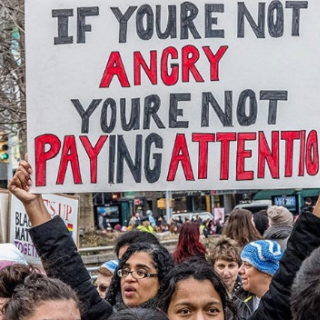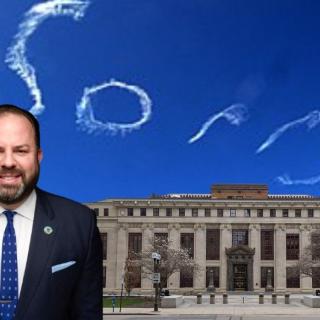Advertisement
We live among swelling waves of misinformation and disinformation. This is sometimes by accident but increasingly by design in organized campaigns. The daily and periodic media remind us of this with respect to politics. But too often unremarked is that this radical attack on the foundations of our democratic mutual exchange of verified information is the undercutting of medical science—as well as climate and safety. Not without precedent, the frequency and threat are unparalleled.
Consider a major case in point:
The New York Times promotes a prominent misinformed challenge to scientific knowledge without any basic investigation.
In March 2017, the New York Times published an article that accused Dr. Carlo Croce of The Ohio State University Medical Center of blatant scientific misconduct. [(https://www.nytimes.com/2017/03/08/science/cancer-carlo-croce.html)] Clearly apparent, the accusations were based almost completely on the unproved claims of D.A. Sanders, a Purdue University virologist.
The Times report is notable for two main points.
First, although the reporters repeat questions about the results of more than 20 of Croce’s publications, they never ask if the principal conclusions of Dr. Croce’s research were replicated by independent labs. This is basic scientific method.
In fact, the major findings were confirmed independently [see "Independent labs" attached below]. The article also does not mention that Dr. Croce’s lab has published more than 1000 articles that form the basis of successful treatments for cancer, such as the use of a specific inhibitor (anti-bcl2) against certain forms of lymphomas that have saved hundreds of thousands of lives.
Second, the article fails to state that D.A. Sanders is not a specialist in the same field for which he criticizes Croce, an oncologist. In addition, the New York Times did not investigate Sanders’ own research credibility. They would have discovered that accuser Sanders may have re-used data himself [see "misconduct" and "additional DA Sanders II" attached below]. Purdue University investigated the charges against D. A. Sanders. They concluded there was no evidence of re-use of data [see "Pudue ersponse copy" attached below]. Since D. A. Sanders is a self-appointed activist in exposing scientific misconduct in fields he has no qualifications, Purdue University may wish to avoid the embarrassment of exposing his own research short-comings.
We ask readers to form their own judgment.
What are the essential elements of scientific misconduct?
Scientific misconduct is easy to define. It has two essential elements. First, the accused must fabricate or re-use old data and claim falsely that it is new data Second, this is done to deceive others about main conclusions. It is difficult to discover new medical principles about complex fields like cancer research with good data and impossible to do that with false data. It follows that if the main, novel points of a scientific article published at least several years ago are confirmed by independent laboratories, then the publication is valid and by definition does not represent scientific misconduct.
These simple points are clearly discussed in a recent scientific paper: G.J. Nuovo, “The key role of the pathologist in both documenting and exonerating accusations of scientific misconduct” [Annals of Diagnostsic Pathology, 2022 Dec; 61:152053. Doi : 10.1016/j.anndiagpath.2022.152053. Epub 2022 Oct 11. PMID: 36252445. ] Dr. Gerard Nuovo emphasizes that the solution to this problem requires independent investigators, and the use of most stringent, explicit criteria to define misconduct [see "Misconduct article published copy 3" attached below].
Why is fabrication/falsification attempted? Researchers inhabit a world of publish or perish! They are under intense pressure to make new discoveries about diseases in order to get grants, publications, maintain their positions, and make commercial arrangements. This pushes some to misconduct.
A final point: Data that are not central to the main points of the paper are sometimes re-used by mistake or purposefully. This typically reflects sloppiness or cutting corners. Such behavior needs to be disciplined with stronger supervision and remedial actions. But to retract such papers and relentlessly attack such a researcher where the data for the main points are solid and accurate is like taking someone’s driver’s license away for life for going 10 mph over the speed limit.
The politicization of scientific misconduct
The example of the New York Times is compelling. It is not unique. A major mass media outlet misleads millions of readers based almost completely on the word of one person whose own credibility is suspect. This differs little from claims that “slavery benefited enslaved people.”
Misinformation bleeds over to most if not all fields, including science itself, in general and false claims of scientific misconduct in particular.
----------------------
Harvey J. Graff is Professor Emeritus of English and History, Ohio Eminent Scholars in Literacy Studies, and Academy Professor at The Ohio State University. His most recent book is Searching for Literacy (2022). My Life With Literacy is forthcoming. Reconstructing the “Uni-versity” from the Ashes of the “Multi- and mega-versity” is in progress.



